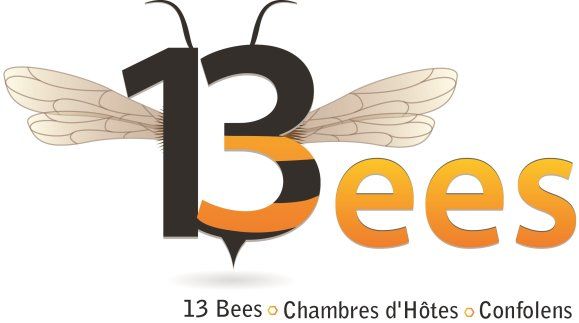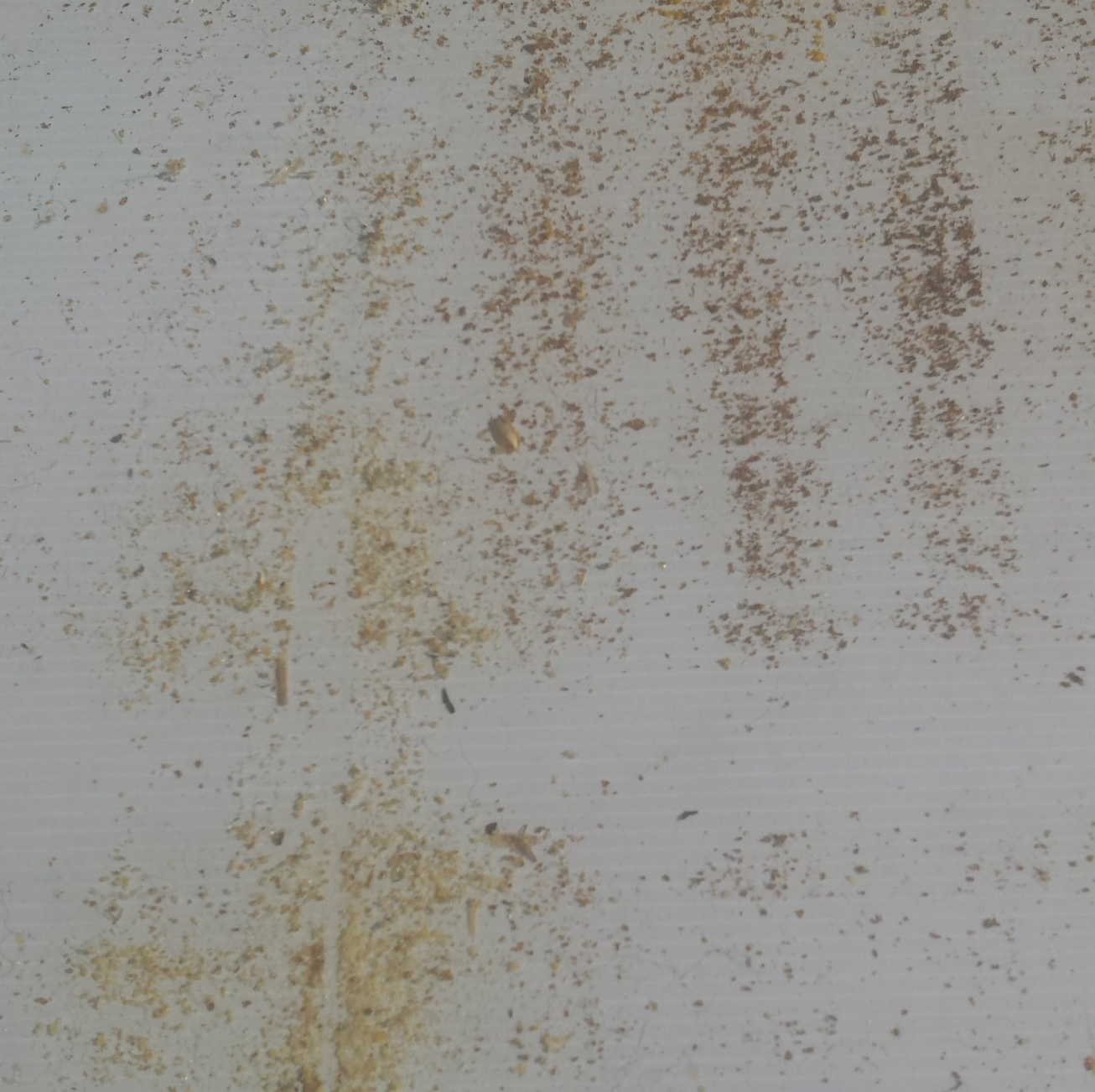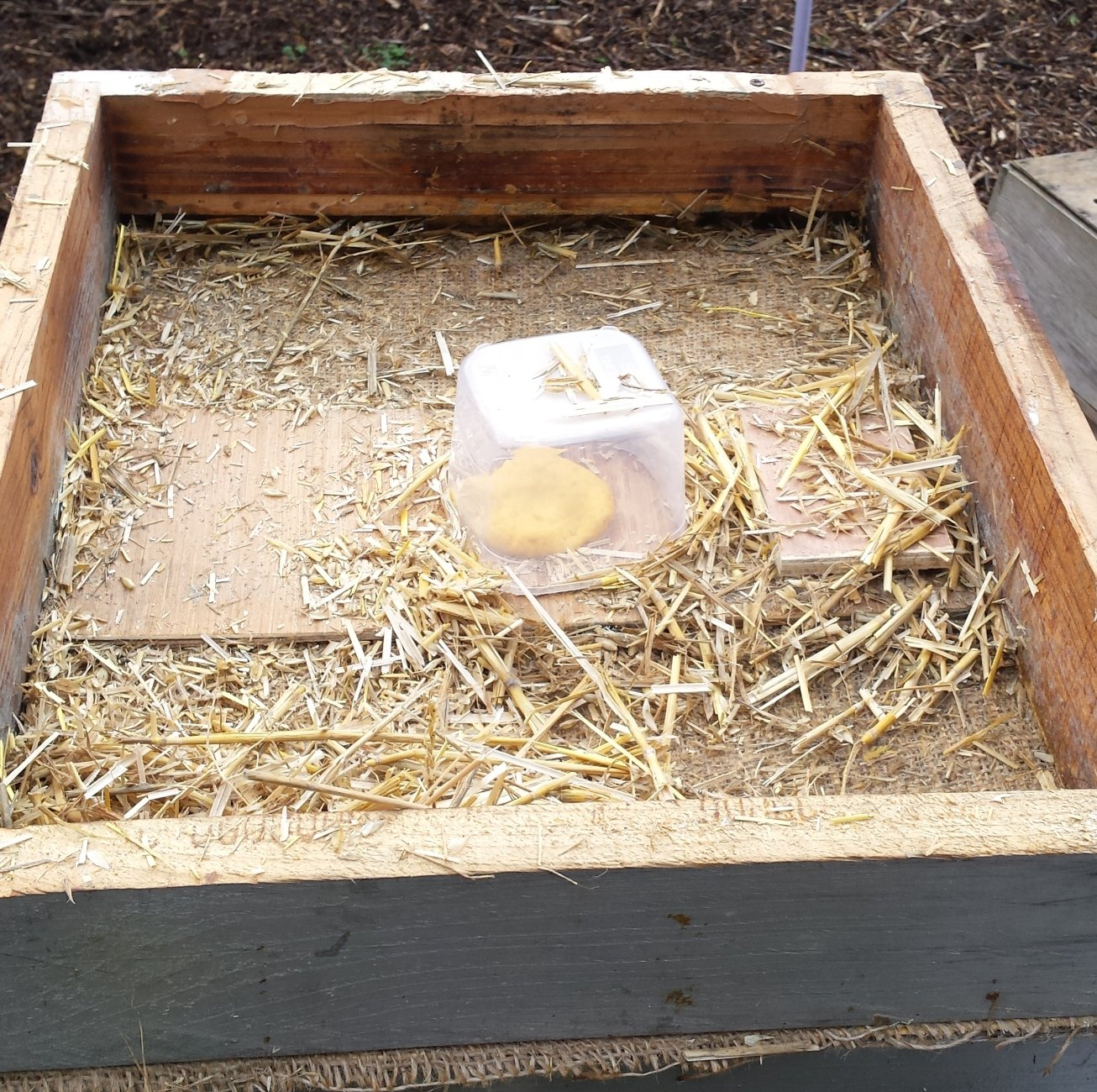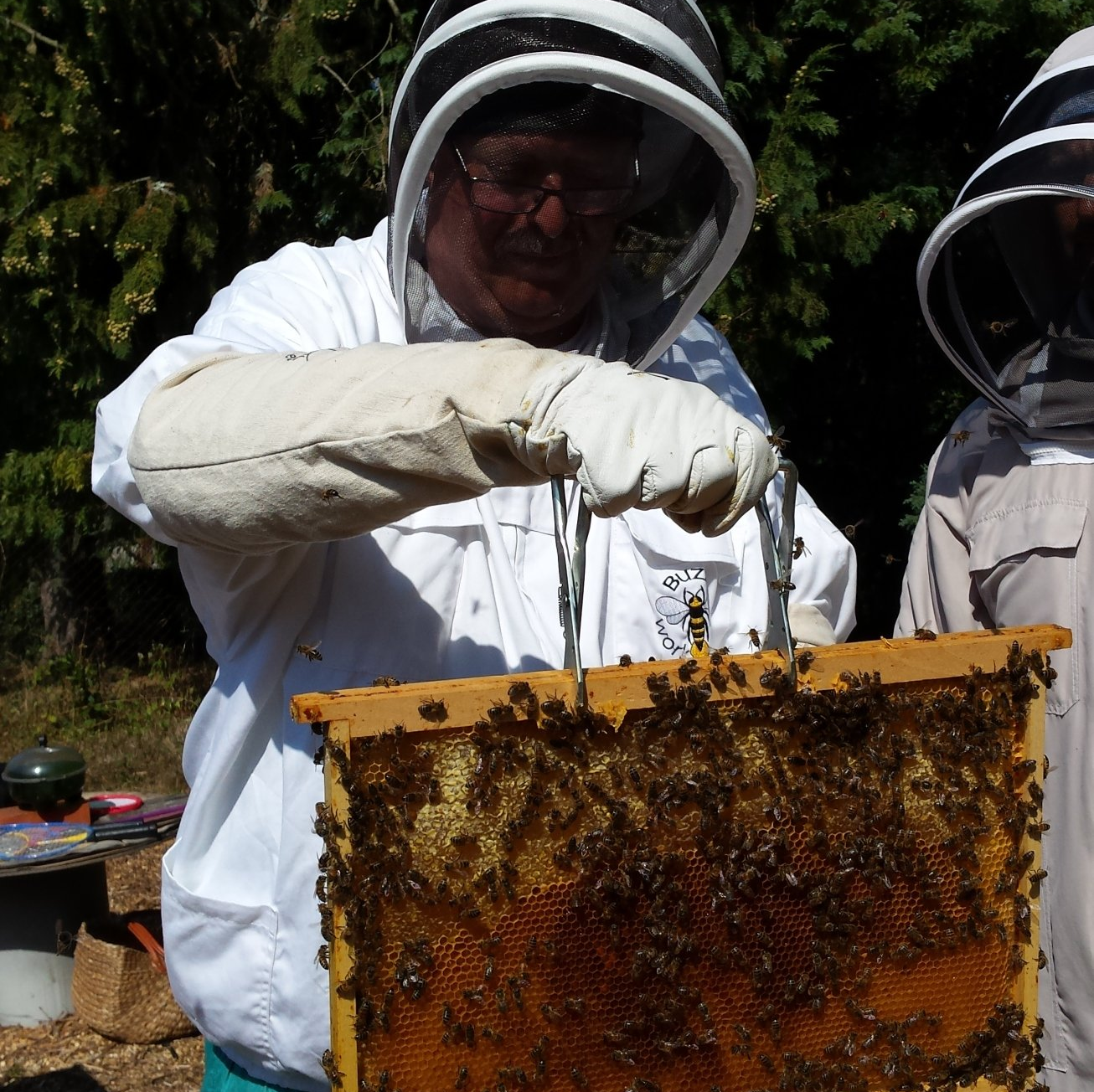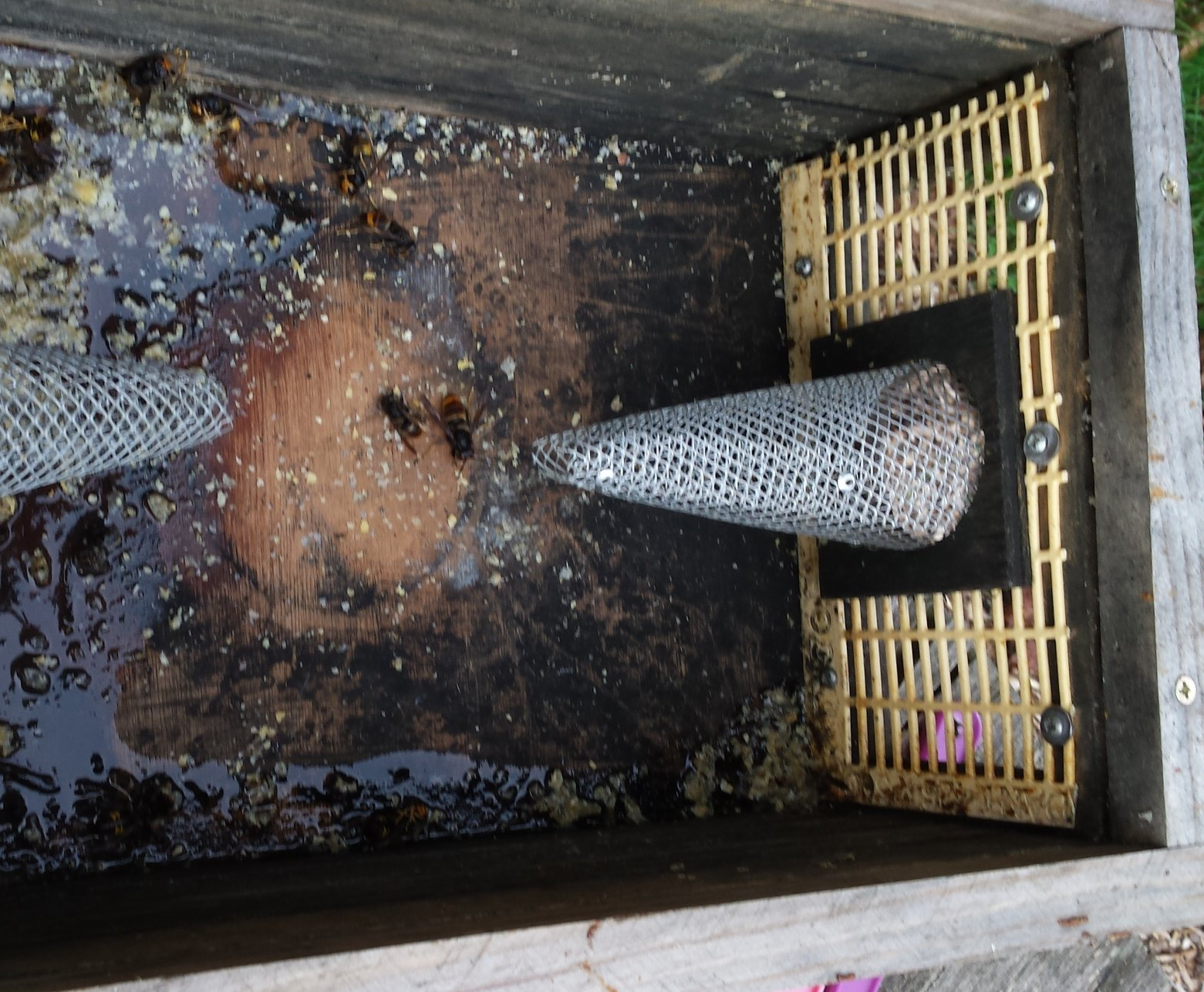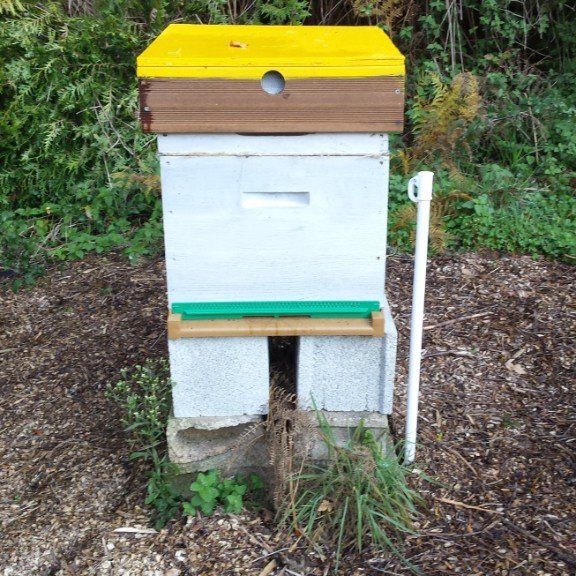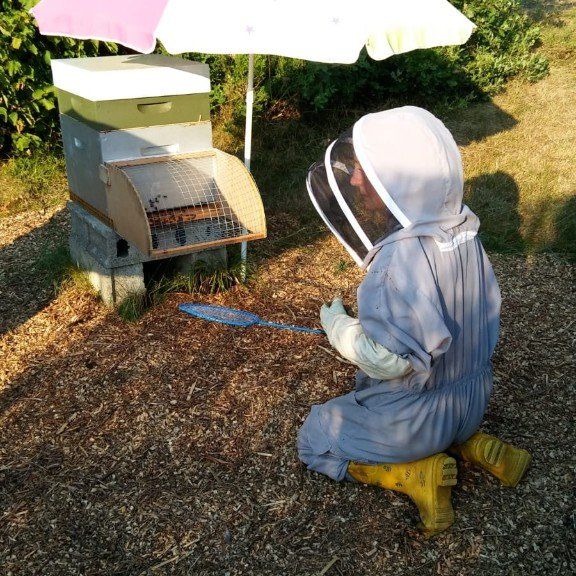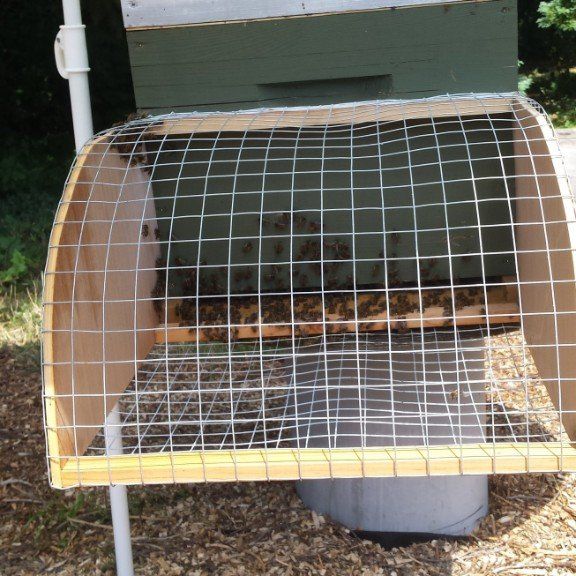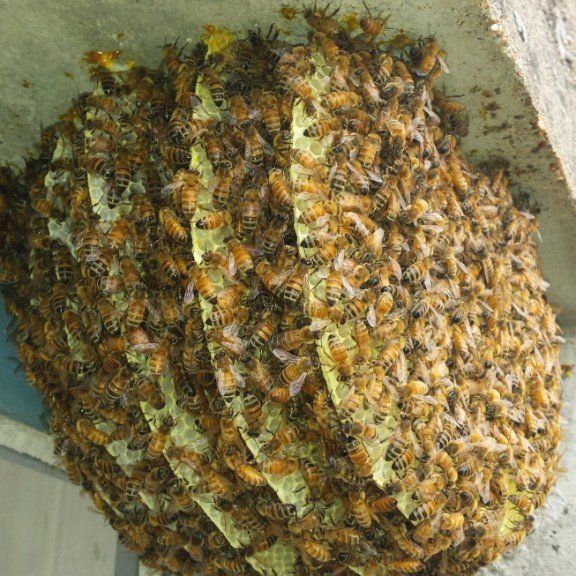Blog Post
Time for beddy-byes...
- by Thirteen Bees
- •
- 09 Oct, 2017
- •
The season's final hive inspections
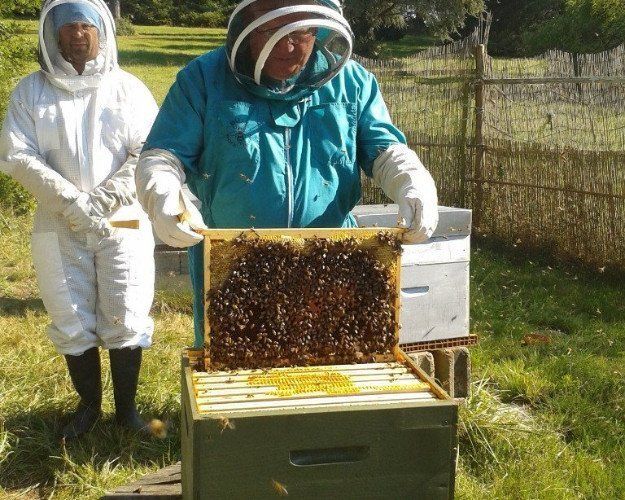
Weather-wise it's been a tricky year for the bees, who have struggled to gather enough nectar to cap over as honey to see them through the winter. At the end of July things seemed to be going well with the super boxes filling up nicely. Then we had a cold spell and a lot of rain in August and the bees couldn't get out to forage. Of course the queens were still laying and so the colonies had lots of hungry new mouths to feed, which meant they turned to their stores. When we looked at the beginning of September almost all the nectar had gone, eaten by the hivebound bees! It was a bit disappointing for us as we were looking forward to a good harvest but, to be fair, the honey DID belong to the bees so it was theirs to eat...
We were joined by some keen new beekeepers and put them to work checking our colonies to ensure they are in a fit state to go into winter. The picture above shows a healthy frame full of bees, stores and brood, so all seems well in this particular hive. We carried out mite counts and decided to treat some of the colonies for varroa with Apiguard, trays of thymol which will kill a large proportion of the mites that are on the adult bees. Our apiaries now have a strong smell of thyme around them!
As we did take some honey from a couple of the hives, we also had to check that we'd left enough for them to eat over the next few months. Typically a colony needs around 20kg of stores to see it through the winter. Checking the frames we could see that a lot of them are full of honey and nectar, but a couple of the colonies were quite light when we hefted them, so we will need to feed them with sugar syrup in a round feeder. Hive hefting is just that - you lift the hive with one hand and if it feels nailed to the ground then they probably have enough food. Anything less than that then it's best to give them a top-up.
Our final checks are also to ascertain that each colony has a queen to see it through to the spring. We spotted queens and/or evidence of a queen (eggs!) in all but one of our hives, so we are going to check once more and if we can't find her we will have to unite the queenless colony with a queen right one close by. Hopefully we can do this soon to give the bees a chance of surviving.
We were joined by some keen new beekeepers and put them to work checking our colonies to ensure they are in a fit state to go into winter. The picture above shows a healthy frame full of bees, stores and brood, so all seems well in this particular hive. We carried out mite counts and decided to treat some of the colonies for varroa with Apiguard, trays of thymol which will kill a large proportion of the mites that are on the adult bees. Our apiaries now have a strong smell of thyme around them!
As we did take some honey from a couple of the hives, we also had to check that we'd left enough for them to eat over the next few months. Typically a colony needs around 20kg of stores to see it through the winter. Checking the frames we could see that a lot of them are full of honey and nectar, but a couple of the colonies were quite light when we hefted them, so we will need to feed them with sugar syrup in a round feeder. Hive hefting is just that - you lift the hive with one hand and if it feels nailed to the ground then they probably have enough food. Anything less than that then it's best to give them a top-up.
Our final checks are also to ascertain that each colony has a queen to see it through to the spring. We spotted queens and/or evidence of a queen (eggs!) in all but one of our hives, so we are going to check once more and if we can't find her we will have to unite the queenless colony with a queen right one close by. Hopefully we can do this soon to give the bees a chance of surviving.
Share
Tweet
Share
Mail
Share
Tweet
Share
Mail
©2024. All content is copyright Amanda Baughen, trading as 13 Bees. Registered in France no: 821 360 294
Updated May 2024


